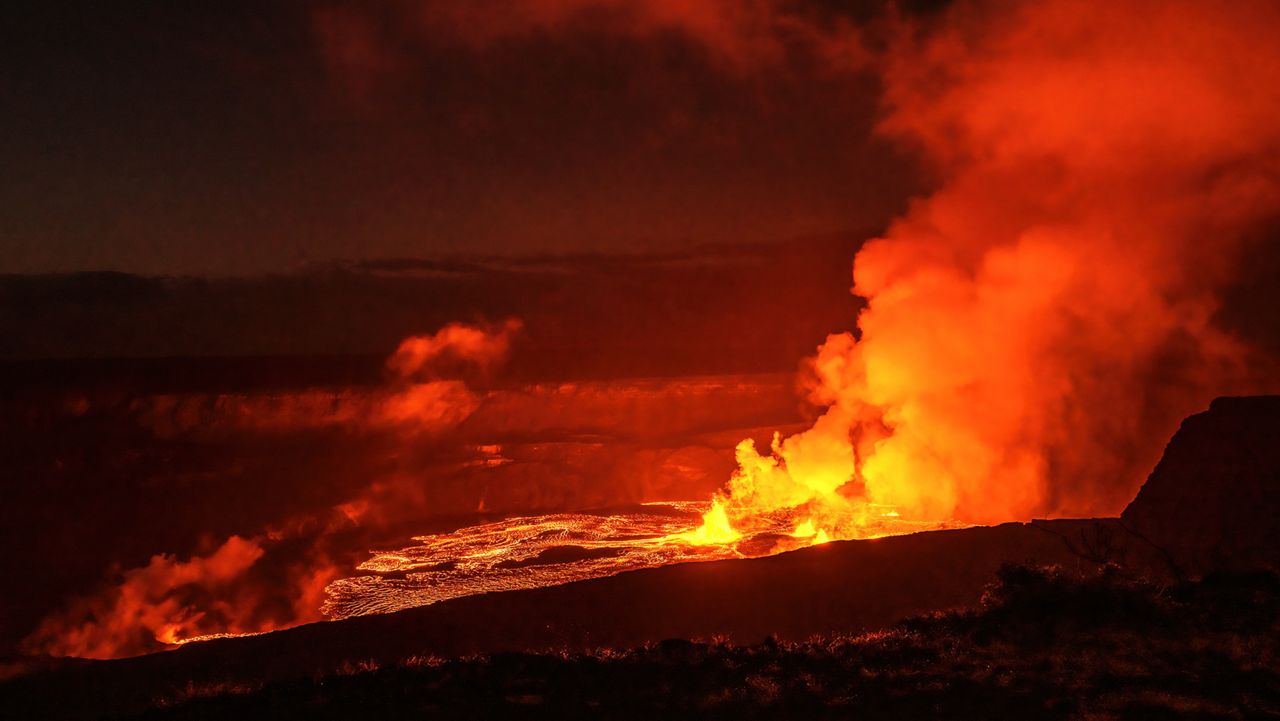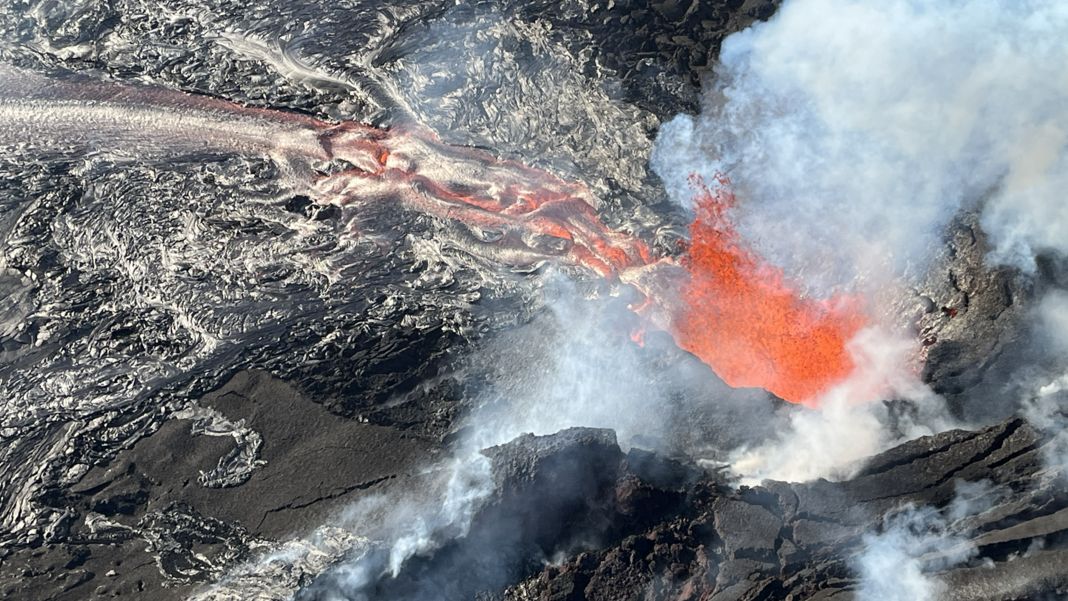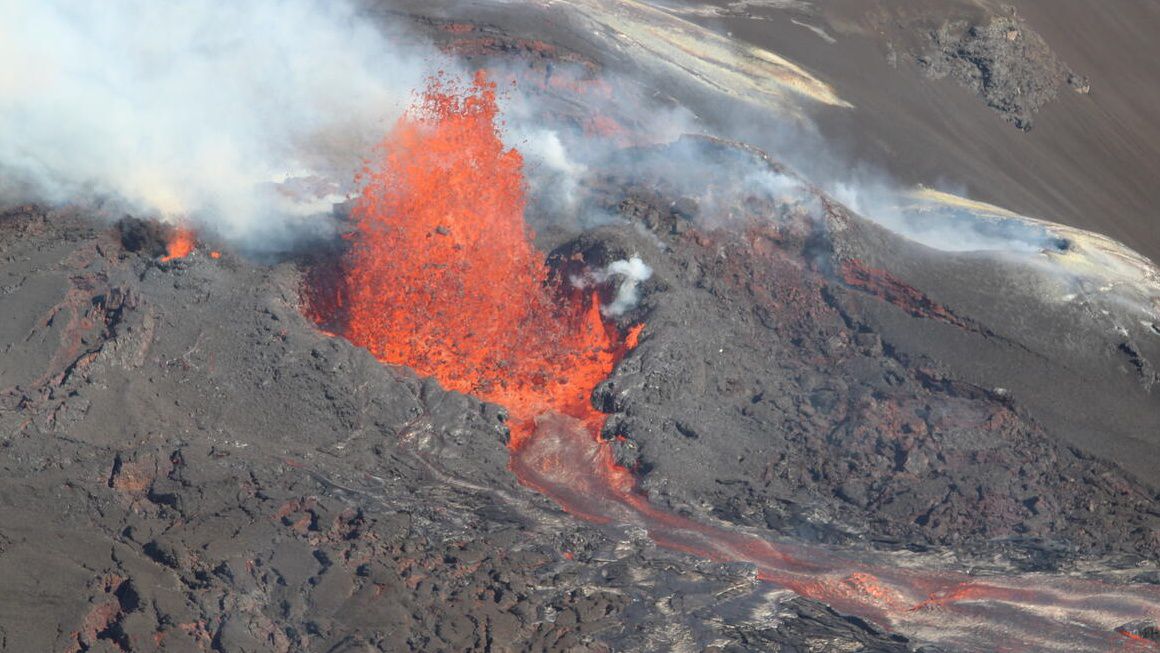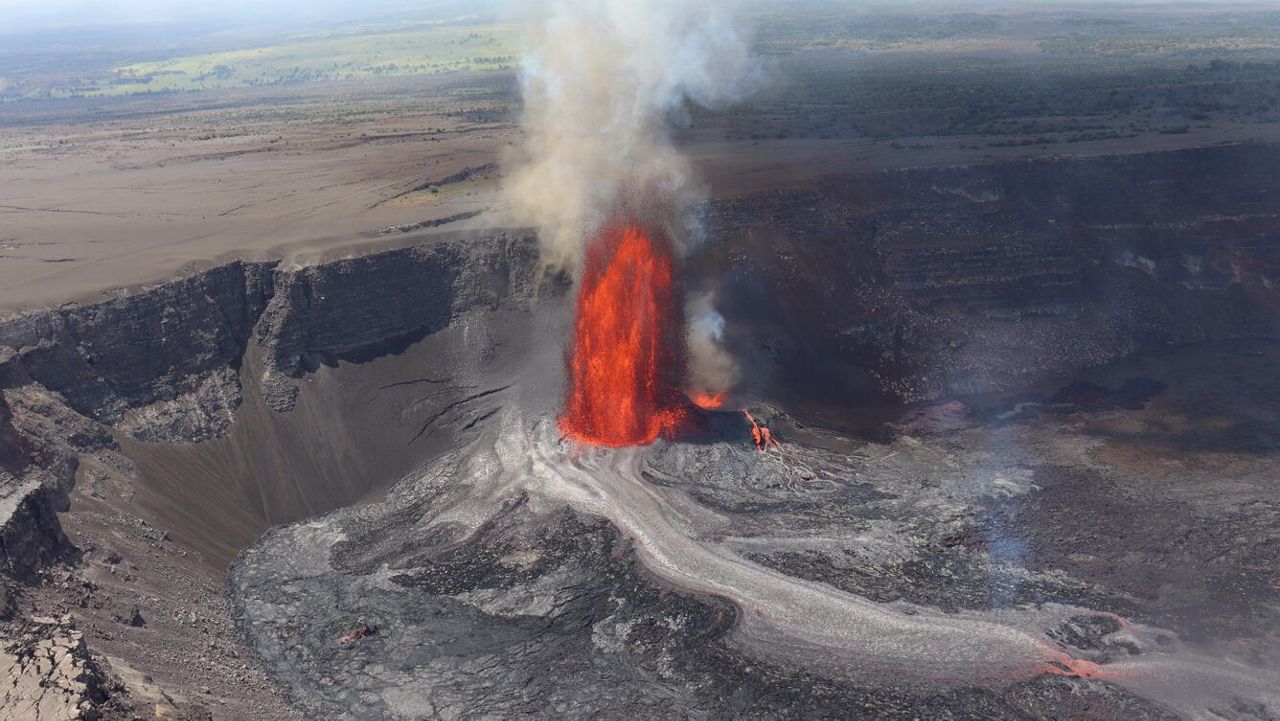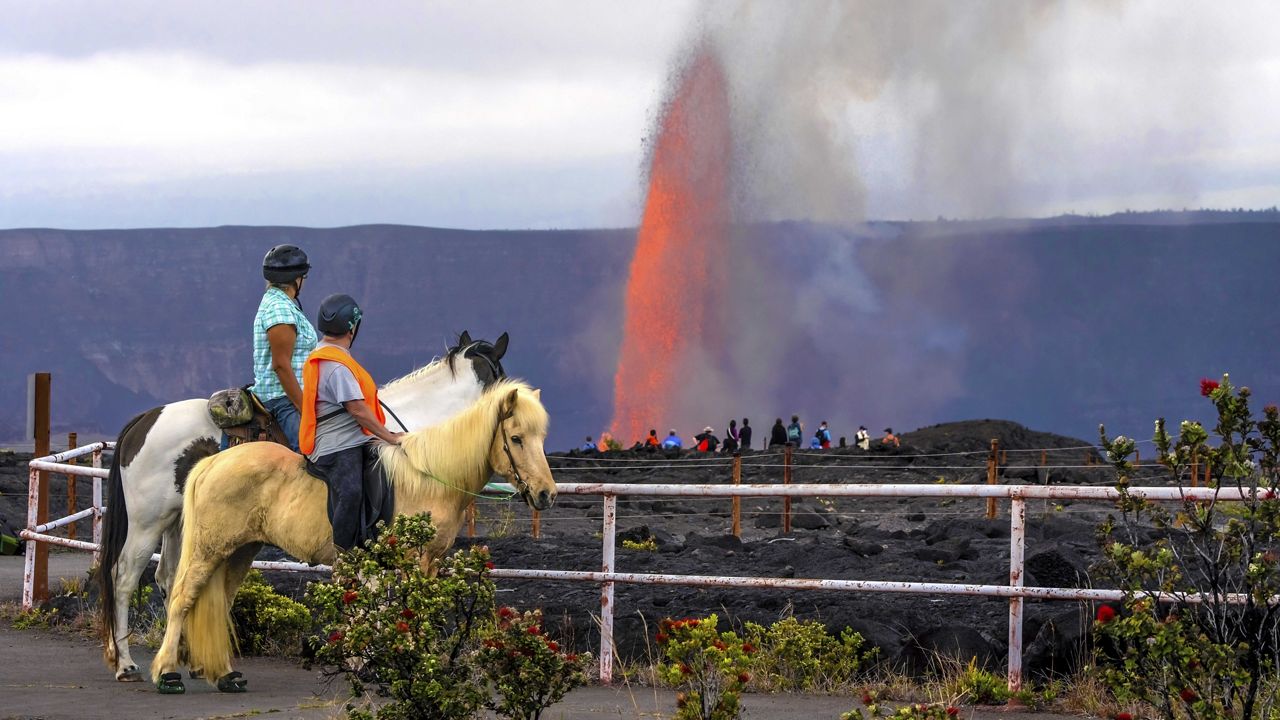HAWAII VOLCANOES NATIONAL PARK, Hawaii — The Hawaiian Volcano Observatory announced in a news release that the Kilauea summit is “exhibiting signs of elevated unrest.” However, the volcano is not currently erupting.
The current volcano alert level is “advisory.”
Over the past week, earthquake rates beneath Kilauea’s summit increased from an average of 20 per day to 40 per day. On Aug. 13, there were 100 earthquakes, including a magnitude-4.3 earthquake that was felt across Hawaii Island. Other earthquakes were smaller, averaging about magnitude-2.
Similar to conditions before Kilauea’s most recent eruption, ground deformation rates are high at the summit.
According to the Hawaiian Volcano Observatory, the earthquakes and ground deformation rates are signs that magma is accumulating beneath Kilauea summit. An eruption might begin with little warning, but the volcano observatory said the signs do not suggest an eruption is imminent.
The last eruption at Kilauea started within Halemaumau crater on June 7 and lasted until June 19. Before that, Kilauea erupted for 61 days from January until March.
From Sept. 2021 until Dec. 2022, Kilauea was erupting. For about two weeks in December, Mauna Loa also erupted on Hawaii’s Big Island.
In 2018, lava from Kilauea destroyed more than 700 homes.
Prior to the 2018 eruption, Kilauea had been erupting continuously since 1983. Kilauea is one of the world’s most active volcanoes in the world.
Michelle Broder Van Dyke covers the Hawaiian Islands for Spectrum News Hawaii. Email her at michelle.brodervandyke@charter.com.





